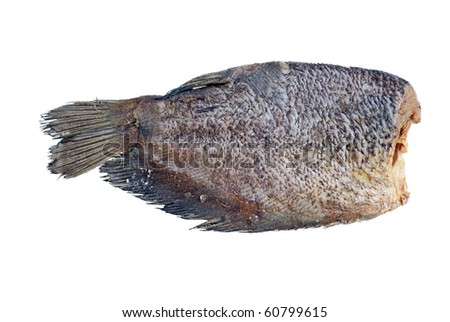The herd of black and white cows leaped onto my tin roof, stood up on their hind quarters and amazingly began a fast tap-dance number. The din was deafening. It went on for quite a while. One of them started to lose her footing and a black hoof shot through the ceiling. In seemingly slow motion, the rest of the cow followed the direction of the hoof and crashed through the roof and directly onto me. Meanwhile, the rest of the herd was still dancing in unison and the din just got louder as more cows jumped onto the roof.
Just before the big chunk of kicking beef made body contact, she faded away and I woke up groggily to the sounds of firecrackers on a Sunday morning at six o’clock, ten days before the Chinese New Year. The firecrackers ended with a rip-roar as I lay subconsciously in bed with my head on the pillow, expecting more cow hooves but there was silence. My ears strained for the sounds of my neighbors’ babies crying and heard sound of stirring.
Both the babies must have been in deeper slumber than I thought and did not wail. Perhaps, their mothers had managed to pacify and comfort them back to sleep. What a relief, I can get a few more hours of eye shut. Snuggling back into my warm bed, I would not let this annoyance get in the way of my Sunday late slumber; dreamland is in sight again.
The owner of the next house had made major renovations to it and it was almost ready after several weeks of feverish construction. The evening before the incident, excited discussions could be heard as the family came to examine the outcome, excited about the prospects of moving back in. The commotions eventually faded away as the black night took over.
Surveying the scenery later that morning, the evidence was clearly in sight. There was a carpet of red shredded remnants of firecrackers scattered on the almost completed front porch as the workers continued their finishing touches. The new tenants must have stood there in rapture and glee, watching as thoughts of imaginary spirits and demons fleeing the house from the ruckus, ran through their minds.
Like a house cleansing ritual of old Chinese customs, the firing of noisy fire-works would serve to chase away any bad spirits lurking in the foundations and bring in good luck and tidings.
I wondered over morning tea and breakfast how the rest of the neighbors might have felt. If the house owner had hoped the exorcism rituals would work, I think it would have to be a futile exercise because sleeping angry spirits had been aroused from its slumber by the thoughtless racket at an unholy hour.
That got me thinking about superstitions and myths that infuse our Asian cultures. How far do we subconsciously allow these beliefs to influence our daily walks in life that it sometimes becomes counterproductive? An example is the number four as it sounds like the word ‘Sie’ or ‘die’ in most Chinese dialects and is considered inauspicious or ‘Pantang’ in Chinese feng shui.
Living proof is in the family of a friend who frequently objects to outings when the chosen date falls on inauspicious days. Work appointments with clients are often rescheduled should it fall on a fourth day of the month. Interestingly, many of them agreed to the rescheduled dates. I am also advised not to do anything unusual outside my normal routine on the fourth of every month.
So let’s examine how much more these superstitions will influence our daily lives if these demons are let loose in our minds and have free rein?
Today, I am interviewing the Oriental Pantang Demon whom I had the utmost good fortune to encounter as he rolls around playfully on the messy red firecracker carpet that morning.
Q : Pantang Master, what sort of car should we drive for good luck?
A : My unlucky mistress, the Number Four Demon says you should not drive a car at all. Cars have four wheels on the ground; the spare tire does not count because it does not touch the ground. Therefore your choice of vehicle should be a bicycle, rickshaw or a motorcycle with a sidecar if you are a family man or better still, a truck with five or more wheels.
Q : Why a truck?
A : Most modern cars have four side doors. The rear door or boot does not count if it opens skywards… it’s no longer a side door. A truck normally have only two side doors and six wheels.
Q : Okay, this feng shui tip is only for wheels and doors, right?
A : No, most modern cars are based on the four-stroke combustion engine design. There is a ‘Sie‘ element in this design.
Faithful “pantangers” who wish to observe the religion of “pantanging” should always use the two-stroke-driven motorcycle, diesel or electric powered vehicle. There are many unlucky designs and elements in the modern car like the four-big-eye-small-eye Mercedes and ….
Q : Excuse me, (as I cut in) does it mean I have to change my car?
A : Yes, you have to choose a two or three-door car... with three wheels. Five wheel cars have not appeared on the market yet. So the Piaggio Ape is ideal.
Q : What if we meet you or your mistress while driving on the road?
A : Avoid all road junctions. Big unlucky trouble lurks at the four sets of roads on the cross-junctions. Traffic light junctions are simply bad feng shui.
Be suspicious of the four sets of traffic lights blinking at you. It’s my wife’s twin brother, Number Empat Demon in disguise winking at you. Take the long way home to avoid any junctions that breathes on fours. Never drive under flyovers that have four lanes. Drive carefully, and never use the fourth gear.
Q : All this talk is making me hungry. Are you hungry? I’m so hungry now I could eat a lucky horse. Any other auspicious foods we can eat to improve our fortunes?
A : When you order from the menu, avoid beef, venison, lamb, mutton, rabbit or pork. After all, they come from four legged animals. It’s bad feng shui to eat unlucky foods, you know. So good-luck foods are chicken, duck, quails and pigeons. Ahhh… here comes the waiter with your fourth dish. Wonderful done, your goose is cooked just right.
Q : “Aiyoh! Die, Lah… what to eat like that!?” I cried angrily as I bang the table hard with my fist. The sound echoed around the four walls of the Chinese restaurant.
A : Careful, don’t bang the bad luck out from the furniture. Take a hard look at your tables, chairs, and cupboards with their four legs. How long has you been sitting at your unlucky table and on the chairs? I hope you will not add or subtract a wall in your existing house to achieve feng shui equivalent. Otherwise, I can't visit you that often.
Q : What about tips on traveling and shopping?
A : Avoid Lucky Valley at all cost. You can’t shop there. They have four corridors called North, South, East & West. My children are always playing around in the East and West wings.
You can’t holiday in New Zealand, China, the Western hemisphere or for the matter of fact… any countries that experience the four seasons of Spring, Summer, Autumn and Winter. Very pantang one.
Q : Are we ever safe from you anywhere?
A : When you are flying fifty-five thousand feet above the earth and the aircraft has four engines, you’ll be sure my mistresses, children and I are in First Class.
Q : Do you like pets, Pantang Monster? I could adopt you as my mascot, you know… maybe put you in a round fish bowl like a lucky goldfish for good charm?
A : I just love bad luck pets. Pets are my favorite subject. Cats, dogs, sugar gliders, hamsters, lizards or any four-legged animals are potential candidates for bring bad luck into the household. And there is the year of the Rabbit. And the Tiger. And the Dragon. And the Goat… (I could hear an evil chuckle).
But I hate spiders and crabs… they all have fatt legs.
Q : Next question is for the punters. When will 4444 strike the first prize this year?
A : Sie lor! You can not play the 4D lottery! Even the word ‘Luck’ is not on your side for it is spelled with four letters. But don’t be surprised to see your ‘pantang’ friends there. Many of them are life-time customers at the 4D shops.
Q : What about languages? We speak no evil, right?
A : My other mistresses, the Colorful Slang Devil says you have to avoid using any words with four letters in it or four-letter words. I’m not sure what she is trying to tell me but maybe somehow, I think conversations may be less interesting without them when you can’t even describe the object. You can’t even play [censored] golf. The word ‘Fore’ sounds like ‘Sie’! The other golfers on the course will not be amused with you.
Q : Does this affect modern life as well like computers?
A : You can’t use a computer keyboard. From F1 to F4, there are four keys. From F5 to F8, there’s another four keys… bad feng shui comes in series. See what happens when you press F4. Bad luck pours out… maybe your hard disk will crash! Who knows? So the only way to avoid using the F4 key to execute the same command is to press F3 and the ‘A’ key together.
Q : Sie-For! This bad news will spread like wildfire.
A : He he he. Be careful when you use the word ‘Fire.’ It’s a four letter word and in the Chinese Language, it sounds like “Four” and therefore, sounds like “Sie”.
Q : So, last question, Pantang Monster. Are you afraid of firecrackers?
A : Ho Ho Ho. Be careful when you use the word again. Plus, you know I love red.
So the interview has ended. He did not quite answer the last question to confirm if the firecracker exercise had worked at all as the Pantang Demon and his mistresses skip their way merrily into the nearest pyrotechnics shop to check out the meanest bang and flash sticks for their children.
Conclusion, the ‘pantang taboo’ list is still long and distinguished. So how far will one allow the “Pantang Demons” to get in our daily lives? Being pantang these days is not quite practical, so as to speak. Sensibly, one should not allow the Pantang Monsters to dictate our lives.
As for me, I would take all these with a pinch of salt; sprinkle it on my delicious shank of lamb curry tonight before dinner starts. Yummy. Oh, one last word on this subject… do remember to clap five times loudly to chase away the bad spirits before you exit your Piaggio Ape.
Meanwhile for the duration of that Festival Season, I had prepared for the sound of thousands of polka dot horses dancing the Flamenco in my dreams.
I wanted to post this article in the fourth month of this year... pantang lah but what the heck… Happy Chinese New Year, belated… anyway.
Peace, Prosper and Long Life.












